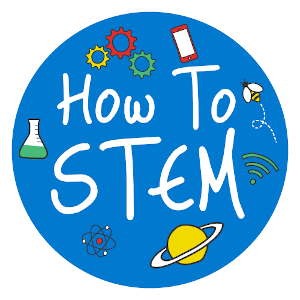
Welcome to the Autumn 2022 edition of our seasonal STEM guides! It contains:
Diaries at the ready! The events listed below are a really good way to help theme your STEM activities and help children to make real-world links. From mild weather to frosty starts, from darker evenings to colourful trees, Autumn has it all! Make the most of this time of transition with these STEM events.
National Coding Week (19-23rd September)

National Coding Week aims to build people’s confidence and digital skills through fun, engaging coding events. You can take part by learning to code. There are lots of great coding activities and games online to help you with this. Visit their website to get involved: https://codingweek.org/
How to get involved…
National Recycling Week (17-23rd October)

National Recycling Week to bring a national focus to the environmental benefits of recycling. Each year Recycle Week attempts to change people’s recycling behaviours while gaining positive publicity. It’s a great chance to raise awareness of the importance of recycling to children.
How to get involved…
Biology Week (1-9th October)

Biology Week showcases the important and amazing world of the biosciences, getting everyone from children to professional biologists involved in fun and interesting life science activities.
How to get involved…
World Space Week (4-10th October 2021)
World Space Week is an international celebration of science and technology, and their contribution to the betterment of the human condition. World Space Week consists of space education and outreach events held by space agencies, aerospace companies, schools, planetariums, museums, and astronomy clubs around the world. Visit their website to find out more: https://www.worldspaceweek.org/
How to get involved…
International Archaeology Day (16th October)
How to get involved…
Chemistry Week (16-22nd October)
National Chemistry Week (NCW) is a public awareness campaign that promotes the value of chemistry in everyday life. This years theme is ‘Sticking with Chemistry’. Visit their website for educational resources linked to this theme.
How to get involved…
Nuclear Science Week (17-21st October)
Nuclear Science Week is an international, broadly observed week-long celebration to focus local, www.ph-pdi.com/phentermine-weight-lose/ regional and international interest on all aspects of nuclear science. Nuclear Science week explores what it means to “Think Clean. Think Solutions. Think Nuclear.” Click here to view lesson plans and resources on their website.
How to get involved…
Big Wild Walk (24-30th October)
It’s time to walk for wildlife and show you care about the nature and climate crisis with The Wildlife Trusts’ Big Wild Walk, 25 October to 31 October. The Wildlife Trusts are asking nature-lovers to fundraise to help raise vital money for their 30 by 30 projects that will restore 30% of land and sea for nature by 2030. Get fit, have fun and raise money for wildlife! Invite the family to join in, set up a remote relay with friends or take the challenge yourself. Visit their website to find out more: https://www.wildlifetrusts.org/events/big-wild-walk-2021
Bonfire Night (5th November)
Try a bonfire night-themed STEM activity such as ‘Frozen Fireworks’. This activity explores the question ‘what happens when we mix fluids of different densities’. For full instructions click here.
Autumn STEM Resource Recommendations
Here are a few of our ‘must have’ Autumn STEM resources. We think you’ll come back to them year after year with your children! Click on each picture to view it on Amazon.
Have we missed off an autumn STEM event or a ‘must have’ autumn STEM resource? If so then add it to the comments below. (note: this is a UK based website so some events have a UK focus).








































